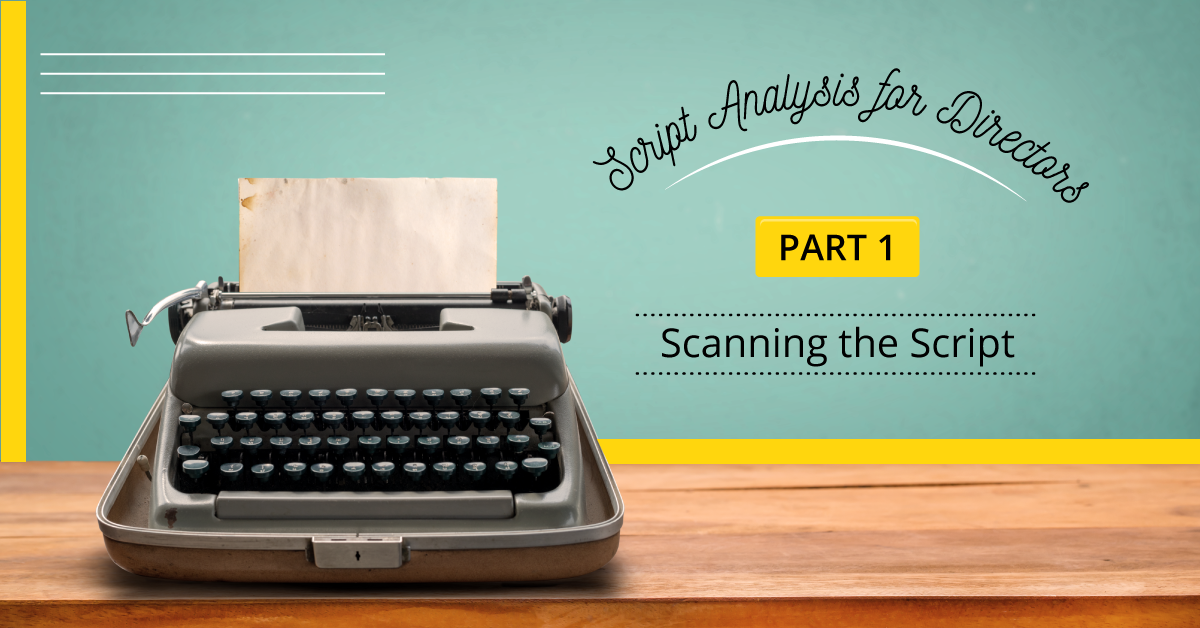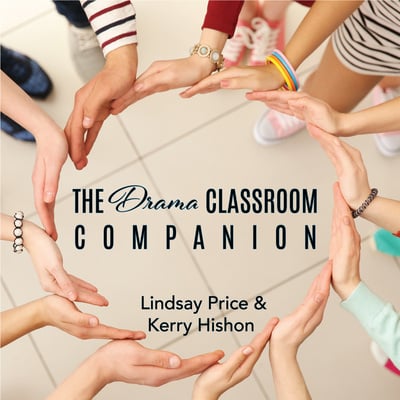Script Analysis for Directors, Part 1: Scanning the Script
When I’m doing my pre-rehearsal preparations for a new show I’m directing, the first thing I do is an initial scan of the script. This is a useful way to start getting your primary thoughts and plans in order, and it helps you get your ideas organized. You’ll go through your script many times throughout the rehearsal process – this is just the first step. Get ready to start analyzing!
What you’ll need:
- Your script
- A notebook and a pencil (just as we tell our students, write in pencil because you’ll inevitably change a note at some point), or a word processing program on your computer
- Various colours of highlighters (if you like to colour-code – I do!)
Choose a fresh section in your notebook, or open a new document in your word processing program. (Alternatively, if you have a single-sided script, you may wish to write your notes directly in your script on the appropriate page so you don’t risk losing your notebook or computer document. Do whatever works best for you.)
Create eight categories on separate pages:
- Lights
- Sound
- Special Effects
- Costumes/Hair/Makeup (these can be two or three separate categories if you wish, but in my initial scan I usually group them together)
- Props
- Set
- Concerns (problems, potentially difficult scenes, aspects to assign to the musical director or choreographer, etc.)
- Ideas (notes about creative solutions to problems, concept thoughts, etc.)
Start by slowly reading through your script, line by line and page by page, and writing down anything that immediately comes up in relation to each category. If you are making notes in a separate notebook (rather than in the script), be sure to include page numbers, as well as line numbers if you use them, so you can cross-reference your notes with your script later. You will also want to leave a little bit of space between each note so you can make changes or additions later.
The first six categories are pretty self-explanatory. Certain technical cues will be clearly indicated within your script, such as Blackout or A train whistle sounds or The Wizard disappears in a puff of smoke. I like to highlight those cues right away (usually lighting in yellow, and sound in pink, but that’s just my preference) so I can easily see them, and have the stage management team start “calling” them right away during the rehearsal process.
Look for specific requirements indicated for costumes, props, and set. For example, “A Victorian father and mother cling to each other and their baby for safety” from the musical Tarzan. The Victorian era was the period of Queen Victoria’s reign, from June 20, 1837, until her death on January 22, 1901. This stage direction gives the director and costume team a clear reference as to what those actors should be wearing (a suit and a dress rather than, say, rubber raincoats or bathing suits). It also gives the overall production a date and time reference. Write it down, as well as any changes in the time period that may affect the appearance of the costumes, props, and set.
Where is the prop in the stage direction above? Well, is the baby an actual human baby actor or a doll? Most likely it will be a doll, so onto the props list it goes. This sounds a little silly because most theatrical productions (high school or otherwise) don’t use real babies onstage. But if it is an animal rather than a baby, it becomes more of a concern. Popular shows like Annie and The Wizard of Oz feature canine characters heavily, and you’ll need to decide whether you are using a real dog, a human actor in a dog costume, or a stuffed animal prop in your production. This leads us to the next two categories: Concerns and Ideas.
Concerns and Ideas are your more miscellaneous categories – but with a focus. Concerns are items that you’ll need to come back to later, or perhaps address with another member of the team, such as casting issues (for example, in A Midsummer Night’s Dream, Hermia must be shorter than Helena – see Act 3, Scene 2), dance choreography, or intricate transitions.
Ideas are just that – brilliant ideas on how you’ll stage something, or an interesting aspect or concept you’d like to include.
Continue through the script, making as many notes as you feel are useful. It doesn’t hurt to write it all down, so you will remember your preliminary thoughts.
At this point, you aren’t making any absolute final decisions. You’re getting your ideas and concerns mapped out on paper and figuring out what needs to be done. But the more details you have considered in advance, the easier it will be to organize your thoughts when working with your students, artistic team, and design crew. And an organized director is a less stressed director!
In our next blog post, we’ll continue script analysis for directors by going a little deeper.
The Drama Classroom Companion
by Lindsay Price & Kerry Hishon
The Drama Classroom Companion is filled with articles and exercises to build the skills needed for theatrical performance as well as real world skills like creative thinking, critical thinking, collaboration, and communication.
The Rehearsal Companion
by Kerry Hishon
You’ve chosen the play, paid the royalties, done the script analysis, held your auditions, and cast the show. Tomorrow is the first rehearsal. Are you ready? Really ready? The Rehearsal Companion can help!





